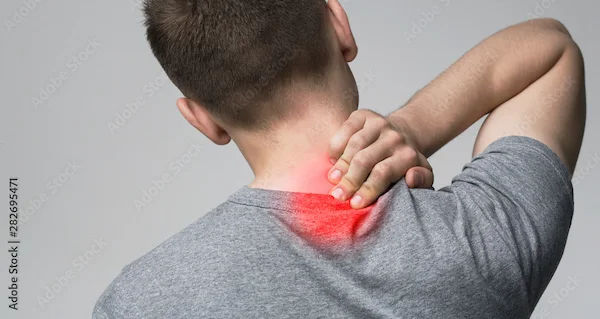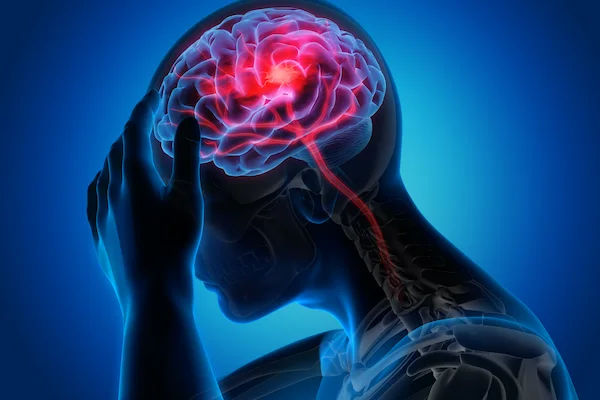Guide to Faqs Hemorrhagic Stroke Or Blood Clot Brain
Understand hemorrhagic strokes and brain blood clots with our comprehensive FAQ guide. Learn about symptoms, risk factors, diagnosis, and treatment options to protect your brain health.


Introduction
A sudden, severe headache unlike anything you’ve ever felt. Weakness on one side of your body. Slurred speech. These are terrifying signs that something is critically wrong inside the brain, the body's command center. Often, the cause is a stroke. But not all strokes are the same. While most are caused by a blood clot blocking an artery (ischemic stroke), a more deadly type occurs when a blood vessel bursts, causing bleeding into or around the brain. This is a hemorrhagic stroke, a medical emergency where every minute counts. This guide will demystify this condition, explaining the crucial differences, warning signs, causes, and what to expect from treatment and recovery. Understanding these details about a brain bleed can empower you to act fast and potentially save a life.
What is a Hemorrhagic Stroke? A Breakdown
A hemorrhagic stroke is less common than an ischemic stroke but is often more lethal. It accounts for about 13% of all stroke cases but is responsible for over 40% of stroke-related deaths. It occurs when a weakened blood vessel ruptures and bleeds into the surrounding brain tissue. The accumulated blood pools, forming a hematoma that compresses and damages delicate brain cells, depriving them of oxygen and nutrients.
Hemorrhagic Stroke vs. Ischemic Stroke: The Fundamental Difference
The simplest way to understand the difference is to think of your brain's blood vessels as pipes.
Ischemic Stroke (Blood Clot): A clogged pipe. A clot blocks the flow of blood, causing brain tissue downstream to starve.
Hemorrhagic Stroke (Brain Bleed): A burst pipe. The vessel wall breaks, and blood spills out, causing direct damage and pressure buildup inside the skull.
This fundamental difference is why the treatment for each is opposite. Ischemic strokes are treated with clot-busting drugs (thrombolytics), which would be catastrophic if given for a hemorrhagic stroke, as they would worsen the bleeding.
Two Main Types of Brain Bleeds
The location of the rupture defines the type of hemorrhagic stroke, which influences symptoms and treatment.
Intracerebral Hemorrhage (ICH): Bleeding Within the Brain
This is the most common type of hemorrhagic stroke. It happens when a blood vessel within the brain tissue itself ruptures and leaks blood into the surrounding cerebrum. High blood pressure (hypertension) is the primary cause, as it can weaken small arteries deep in the brain over time. The bleeding directly destroys neurons and increases intracranial pressure.
Subarachnoid Hemorrhage (SAH): Bleeding on the Brain's Surface
This type involves bleeding into the subarachnoid space—the area between the brain and the thin tissues that cover it. This is often caused by the rupture of a cerebral aneurysm, a balloon-like bulge in a blood vessel. A subarachnoid hemorrhage is frequently characterized by a sudden, explosive "thunderclap" headache.
Consult Top Specialists
Recognizing the Red Flags: Symptoms of a Brain Hemorrhage
The symptoms of a stroke often appear suddenly and without warning. Because brain cells die rapidly, recognizing these signs and seeking immediate medical attention is critical to survival and minimizing long-term disability.
The FAST Acronym: A Lifesaving Tool
The FAST acronym is a simple way to remember the most common stroke symptoms:
Face: Ask the person to smile. Does one side of the face droop?
Arms: Ask them to raise both arms. Does one arm drift downward?
Speech: Ask them to repeat a simple phrase. Is their speech slurred or strange?
Time: If you observe any of these signs, call emergency services immediately. Note the time when symptoms first appeared.
Additional Symptoms Specific to a Bleeding Brain
While FAST covers major signs, a hemorrhagic stroke may also cause:
A sudden, extremely severe headache (often described as "the worst headache of my life").
Nausea and vomiting.
Seizures.
Loss of consciousness or confusion.
Sensitivity to light (photophobia).
Neck stiffness (particularly with subarachnoid hemorrhage).
What Causes a Blood Vessel to Burst in the Brain?
Understanding the causes of a brain bleed is key to prevention. The rupture is typically the result of a pre-existing weakness in the blood vessel wall, combined with a triggering factor.
Key Risk Factors You Can and Cannot Control
High Blood Pressure (Hypertension): The leading cause of ICH. Chronic high pressure strains blood vessel walls until they weaken and rupture.
Age and Family History: The risk increases with age, and a family history of stroke or aneurysms can elevate risk.
Lifestyle Factors: Smoking, excessive alcohol consumption (especially binge drinking), and illicit drug use (like cocaine) can severely damage blood vessels.
Blood Thinners (Anticoagulants): Medications like warfarin, if not carefully monitored, can increase the risk of bleeding.
Underlying Conditions: Aneurysms and AVMs
Cerebral Aneurysm: A weak spot in a blood vessel that balloons out and can rupture. This is a common cause of SAH.
Arteriovenous Malformation (AVM): A rare, tangled web of abnormal blood vessels connecting arteries and veins, which are prone to rupture.
How is a Hemorrhagic Stroke Diagnosed?
In the emergency room, speed is essential. The primary goal is to quickly determine whether the stroke is ischemic or hemorrhagic, as this dictates life-saving treatment.
The Role of the CT Scan
A non-contrast computed tomography (CT) scan of the head is usually the first test performed. It can rapidly detect the presence of blood in or around the brain, making it excellent for identifying a hemorrhagic stroke within minutes.
Advanced Imaging: MRI and Cerebral Angiogram
Magnetic Resonance Imaging (MRI): Provides more detailed images of the brain tissue and can help identify the cause of the bleed, such as an AVM or a tumor.
Cerebral Angiogram: This invasive test involves threading a catheter through an artery to the brain and injecting dye to get a detailed view of the blood vessels. It's often used to locate the source of bleeding, like an aneurysm, especially if surgery is being considered. If your doctor recommends advanced imaging, consulting a specialist through Apollo24|7 can help you understand the procedure and its implications.
Emergency Treatment: Stopping the Bleed and Saving the Brain
Treatment focuses on controlling the bleeding, reducing pressure on the brain, and stabilizing the patient's vital signs.
Immediate Medical Management
This includes:
Blood Pressure Control: Carefully lowering high blood pressure to prevent further bleeding without reducing blood flow to the rest of the brain.
Reversing Blood Thinners: Administering medications or vitamin K to counteract the effects of anticoagulants.
Managing Intracranial Pressure: Using medications like mannitol or diuretics to reduce brain swelling.
Surgical Interventions for a Brain Hemorrhage
Surgery may be necessary to stop the bleeding and repair the damaged vessel.
Surgical Clipping: A neurosurgeon places a tiny clip at the base of an aneurysm to stop blood flow into it.
Endovascular Coiling: A less invasive procedure where a catheter is used to thread platinum coils into the aneurysm, promoting clotting and sealing it off.
Hematoma Evacuation: In cases of a large ICH, surgery may be performed to remove the blood clot and relieve pressure on the brain.
The Road to Recovery: Life After a Hemorrhagic Stroke
Recovery is a marathon, not a sprint. The extent of recovery depends on the stroke's severity, location, and the patient's overall health.
The Importance of Rehabilitation Therapy
Rehabilitation begins as soon as the patient is medically stable. A multidisciplinary team typically includes:
Physical Therapists: Help regain strength, balance, and coordination.
Occupational Therapists: Assist in relearning daily activities like dressing and eating.
Speech-Language Pathologists: Work on improving communication skills and addressing swallowing difficulties.
Managing Long-Term Effects and Preventing Recurrence
Long-term management involves rigorous control of risk factors, primarily blood pressure. If you need ongoing management for hypertension after a stroke, you can consult a doctor online with Apollo24|7 to create a sustainable care plan. Lifestyle modifications, such as a heart-healthy diet, regular exercise, and smoking cessation, are paramount.
Key Differences at a Glance: Hemorrhagic vs. Ischemic Stroke
| Feature | Hemorrhagic Stroke | Ischemic Stroke |
| :--- | :--- | :--- |
| Cause | Ruptured blood vessel (Bleeding) | Blocked blood vessel (Clot) |
| Frequency | ~13% of strokes | ~87% of strokes |
| Common Causes | Hypertension, Aneurysm, AVM | Atherosclerosis, Atrial Fibrillation |
| Initial Treatment | Control bleeding, reduce pressure | Administer clot-busting drugs (tPA) |
Quick Takeaways: What You Need to Remember
A hemorrhagic stroke is a brain bleed caused by a ruptured blood vessel.
Act FAST: Face drooping, Arm weakness, Speech difficulty = Time to call emergency services.
A sudden, severe "thunderclap" headache is a major red flag for a brain bleed.
Treatment is the opposite of a clot-caused stroke; fast diagnosis with a CT scan is critical.
High blood pressure is the number one controllable risk factor.
Recovery is possible with dedicated rehabilitation and lifelong risk factor management.
Conclusion
A hemorrhagic stroke is a devastating event, but knowledge is a powerful shield. Understanding the difference between a brain bleed and a blood clot, recognizing the warning signs using the FAST acronym, and knowing the critical importance of immediate medical action can dramatically alter outcomes. While the journey of recovery can be long and challenging, advances in medical and surgical treatment, combined with comprehensive rehabilitation, offer hope. The most significant step you can take is prevention: manage your blood pressure, adopt a healthy lifestyle, and stay informed. If you have specific risk factors or concerns, don't wait for a crisis. Consulting a neurologist online with Apollo24|7 can provide personalized advice and a proactive health strategy.
Consult Top Specialists
Consult Top Specialists

Dr Syed Mateen Pasha
General Physician
2 Years • MBBS
Bengaluru
PRESTIGE SHANTHINIKETAN - SOCIETY CLINIC, Bengaluru

Dr. Harshendra Jaiswal
General Physician/ Internal Medicine Specialist
12 Years • MBBS , MD (General medicine)
Kolkata
108 DHANA DHANVANTARI Clinic, Kolkata
(25+ Patients)

Dr. Syed Ismail Ali
General Practitioner
7 Years • MBBS
Hyderabad
Apollo 24|7 Clinic, Hyderabad
Dr. Thandra Ramoji Babu
General Physician/ Internal Medicine Specialist
5 Years • MBBS, DNB(General Medicine)
Warangal
Sai Ram multi-specialty hospital, Warangal
Dr. Ramya Reddy Jonnala
General Physician/ Internal Medicine Specialist
2 Years • MBBS
Secunderabad
KK Home Clinic, Secunderabad




